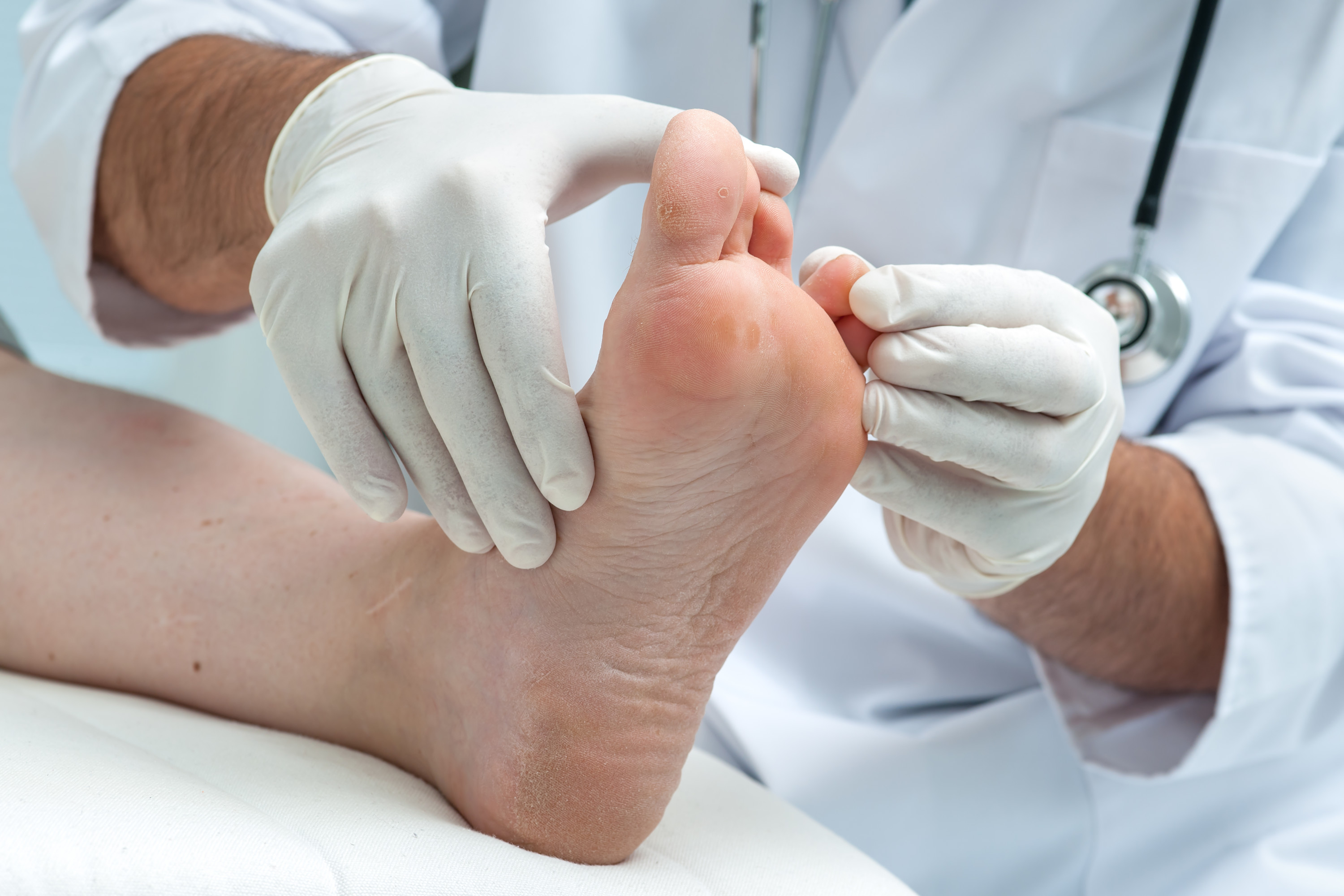How diabetes can affect your feet — and what to do about it
Managing diabetes has many challenges including remembering to pay attention to your feet.
Many people with diabetes have peripheral arterial disease, which is a narrowing of the arteries that reduces the amount of blood that flows to the feet. When there is not enough blood getting to the feet, pain and other symptoms can occur. A second concern for diabetics is nerve disease, which means the nerves are not responding normally. Together, these two common diabetic conditions can lead to foot problems.
Diabetics who are intentionally attentive to their feet can often reduce the chances of developing serious foot issues. The American Diabetes Association suggests being aware of these potential foot problems if you have diabetes.
Calluses
Anyone can develop a callus at a high pressure point on the foot. However, diabetics are more prone to calluses that build up quickly and then break down, leaving an open sore that can become infected. When calluses build up, have a health care provider trim them down. Don’t try to do it yourself or use a chemical agent. This can lead to burns or infections on your feet.
Neuropathy
When the nerves that should be sending messages to the brain are damaged, it is a condition known as neuropathy. The danger with neuropathy is that the ability to feel pain, heat or cold is reduced. A simple blister that is not felt and is therefore not treated, can become infected. Damaged nerves can also cause changes in the shape of the feet or toes which make it hard to fit into regular shoes. If necessary, therapeutic shoes may need to be worn to avoid new issues.
Skin problems
The skin on the feet of diabetics can be very dry and may even peel or crack. This occurs because the nerves that usually control oil and moisture to the feet have been damaged and are not working properly. The cracked and peeling skin can become infected so checking frequently for problems is important.
Foot ulcers
Since diabetics often have less sensation in their feet, they may be unaware that an open sore or ulcer is forming. The most common locations for ulcers are on the ball of the foot or on the bottom of the big toe. Ulcers need attention since they can become infected. Be sure to see a doctor if an ulcer is detected.
Poor circulation
Diabetes can cause the blood vessels in the foot and leg to narrow and become hard. These damaged vessels do not carry enough blood to the feet making it harder to fight infections and heal any wounds. Since there is less blood traveling to the feet, the feet may also feel cold. Warming the feet with heating pads or hot water can be dangerous since it is possible to accidentally burn the feet. Warm socks are a better solution.
Preventing foot problems
Fighting an infection in the feet can be difficult for someone with diabetes. Serious infections can lead to amputation. Take care of your feet by following these suggestions:
Wear proper foot gear – Avoid walking barefoot and always wear shoes that are properly fitted. Wear socks that do not constrict blood flow to the feet and are heavy enough to keep your feet warm.
Check out your feet – Regularly inspect your feet for blisters, cuts, sores, or calluses. Do not try to treat corns, calluses, ingrown toenails or other foot issues yourself. See a doctor as soon as possible for proper treatment. Never ignore a foot problem because it can quickly become serious.
Keep your feet clean – Avoid soaking your feet since this can dry the skin and increase cracking and splitting. After bathing, apply a thin coat of unscented lotion or petroleum jelly to help keep the skin moist. Do not put the cream between the toes since that can lead to infection.
Improve circulation – Try to exercise regularly since exercise increases circulation to your feet.
Getting the best care
There are special concerns for people with diabetes who undergo surgery or an unexpected medical event. Extra challenges from dietary needs to healing problems must be addressed properly for an effective recovery. A good choice for this level of care is to choose to recover in a short-term care facility where there are experienced professionals who know what to expect and what to do if the unexpected happens.
Whitehall of Deerfield is one of the most effective and luxurious options for short-term care on the North Shore. Whitehall of Deerfield has consistently been given Medicare’s highest rating in its five-star quality rating system of rehabilitation facilities and is accredited by The Joint Commission, the nation’s leading and most respected health care accrediting authority. Specific protocols for diabetics are in place for trained staff to follow. Guests with diabetes can be sure that everything from a proper diet to monitoring blood sugar will be part of the care plan.
In addition, guests enjoy well-appointed rooms with many amenities including high-speed wireless internet, daily delivery of Starbucks coffee and newspaper and dozens of cable channels with a 24-hour channel of newly released movies. Guests select meals from menus and enjoy them either in attractive dining rooms or in the privacy of their own guest rooms. Guests’ needs are addressed by a caring and compassionate staff who are focused on each guest’s recovery. Friends and family will also find valet parking when they come to visit and an attractively furnished lounge is available for spending time together.
For superior care in a luxurious setting, choose Whitehall of Deerfield. To learn more or schedule a tour, visit whitehallofdeerfield.com or call 847-945-4600.

